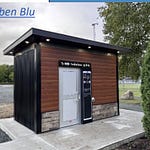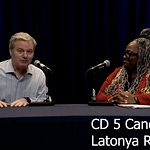Introduction
If you watched the documentary Precarious State, you saw Jim Rubin, a longtime Minneapolis apartment owner, featured. Our decision to interview him isn’t an endorsement of the film or his views. It’s part of our ongoing effort to make Better Minneapolis a forum for open, sometimes uncomfortable conversations that move the city toward better solutions. What follows is one of those conversations.
Hosting this interview challenged us for several reasons. After a friend passed along his number and told us Jim wanted to come on the show, my editor and I deliberated over the pros and cons for half a day before calling him. We walked the dog. We wondered if Better Minneapolis might be seen as siding with the landlords some say are trying to run the city.
Jim convinced us on that first call by saying we could ask him anything. Nothing was off limits—not even our misgivings. We told him we weren’t entirely comfortable with the ending of Precarious State, which claims the “new normal” in Minneapolis is gang warfare and shootouts in the streets. Jim said, “Go ahead and ask me about it,” so we did.
The documentary was controversial, and Jim became the target of personal attacks—most notably from the PAC Minneapolis for the Many. We hesitated to risk Better Minneapolis becoming a target of similar vehemence. Jim later fought back against their statements, and the group has since issued a public apology.
In the end, we decided that avoiding the conversation would make us guilty of the same behavior that troubles us most about today’s political climate—where people only listen to those they already agree with. It’s one of the reasons we were grateful to Council President Elliott Payne for agreeing to an interview. We know he disagrees with much of what we write in this newsletter, and yet he still chose to participate.
The reality is that most of Minneapolis’s housing is provided by private businesses. When politicians turn their backs on people like Jim Rubin, they deny that reality in ways that can weaken the city’s housing ecosystem. If the goal is to create more affordable housing, it’s illogical to ignore those already providing much of it—if only to understand the challenges any public solution will face. Even if you believe housing is a human right that should ultimately be provided by government, it still makes sense to learn how housing is built and operated today from the people doing that work.
This morning, we woke earlier than usual, preoccupied with how to frame this interview. A New York Times article about the recent Mamdani rally in Queens helped crystallize it for us:
For his part, Mr. Mamdani has tried to signal that he recognizes the importance of making good on his big promises, even if it involves expanding his ideological tent.
‘The most important thing is delivering,’ he said in an interview on The New Yorker podcast. ‘If that is your framework, then you have to be willing to listen to everyone who can bring you closer to that.’”
If politicians who champion affordable housing are truly focused on delivering it, they would be well served to listen to the Jim Rubins of the world. Otherwise, their rhetoric risks becoming little more than virtue signaling—an attempt to win votes by creating divides rather than solving problems.
Even if the state, county, and city were to deliver a windfall of funding tomorrow, bringing new housing projects to fruition would still take five to ten years. Ignoring those with experience in the field only increases the likelihood of cost overruns, delays, and disappointing outcomes.
We recently invited Tane Danger to host the podcast. As part of his “Sketches of Minnesota” project, he’s heard a wide range of opinions from across the state. It struck us as true when he described people as having a “constellation” of beliefs—meaning that most of us hold views scattered across the political spectrum. We agree with some ideas from the left, some from the middle, and some from the right. Few of us fit neatly into a single camp, and that diversity of thought not only makes life more interesting, it often leads to better solutions. It forces us to think more carefully about where we agree and where we don’t.
Having those difficult conversations often reveals that we share more common ground than we assume—certainly more than social media would have us believe. Online, outrage is rewarded and conflict is amplified. If the Democratic Party is to succeed in “expanding the ideological tent,” it will be because its leaders, pundits, and activists begin listening to a broader range of voices—even those with whom they disagree.
We’ll admit, we never completely overcame our nerves about this interview. We still felt it was important to be clear that it wasn’t sponsored by Jim, the Multi-Housing Association, or any PAC. Better Minneapolis remains entirely funded by readers. If you value the kind of open, honest conversations we’re trying to foster, we hope you’ll consider becoming a subscriber.
Our Happy Hour for paid subscribers is this Thursday, October 30th, from 4:30 to 6:30.
You can find all of our interviews in the archives or on Apple Podcasts, Spotify, and YouTube.
If you’d like to help expand the work we’re doing—and prefer to donate through a nonprofit—we’ve established a fiscal sponsorship with the Local Media Foundation. The project, called Minneapolis Food for Thought, aims to increase civic engagement by creating stories about local businesses, leaders, and residents.
You can learn more about the project and make a tax-deductible donation here: mplsfoodforthought.org/donate
Here are the key takeaways, distilled for readers.
Why Rubin’s in the spotlight
Rubin has spent 30+ years owning and managing largely affordable apartments, most of them in Minneapolis. That work put him, as he describes it, “in the eye of the storm” when neighborhood conditions deteriorated. Filmmaker Rick Kupchella saw Rubin’s portfolio and proximity as a useful case study; Rubin saw a chance to make chronic issues visible beyond City Hall hearing rooms.
The “new normal” debate
Rubin’s most forceful claim is that certain blocks—he cites 19th & Nicollet—have endured a five-year run of open-air drug dealing, periodic gunfire, and the slow hollowing-out of nearby businesses. He’s careful to note this isn’t everyone’s Minneapolis, but argues it’s real and persistent in specific hot spots. In his view, slimmed-down police staffing and the loss of low-level enforcement tools have left “livability” problems to fester until they occasionally escalate into violence.
Leadership and MPD
On city leadership, Rubin draws a distinction: he credits Chief Brian O’Hara (and, broadly, Mayor Jacob Frey) with trying to rebuild MPD and points to improving trends in headline crimes and officer recruitment. He’s more critical of the City Council, citing funding decisions he believes undercut public safety efforts. Readers may not agree with every diagnosis here, but the through-line is consistent: day-to-day quality of life needs sustained attention, not just reactive response after major incidents.
Policy fights and perceptions
Rubin also addresses political heat aimed at him after the film, including a dispute that ended with a public apology from an opposing group. On housing policy, he argues that broad-brush narratives about “bad landlords” invite overcorrections that burden responsible operators alongside negligent ones. He’s skeptical of TOPA (Tenant Opportunity to Purchase), local rent stabilization, and a new tiered licensing escalation to the Council—seeing them as costly, cumbersome, or poorly targeted. He adds that big national firms can absorb new rules more easily than smaller local owners, a design flaw policymakers should keep in mind.
What would actually add affordability?
Rubin’s answer is straightforward: build more homes. New supply, he argues, eases pressure all the way down the market, even if brand-new units aren’t “affordable” on day one. To unlock building, he calls for basics—safety, predictable rules, and a development climate that signals confidence rather than caution. If property values go down but spending doesn’t, someone else ends up paying the price.
Bottom line: Whether you share Rubin’s prescriptions or not, the interview underscores a civic task we all own: restore safety in persistent hot spots, welcome real stakeholder input on housing rules, and make it easier—not harder—to build homes in the city we love. And as Rubin reminded listeners, leadership choices are on the ballot. Research the candidates. Then vote.










